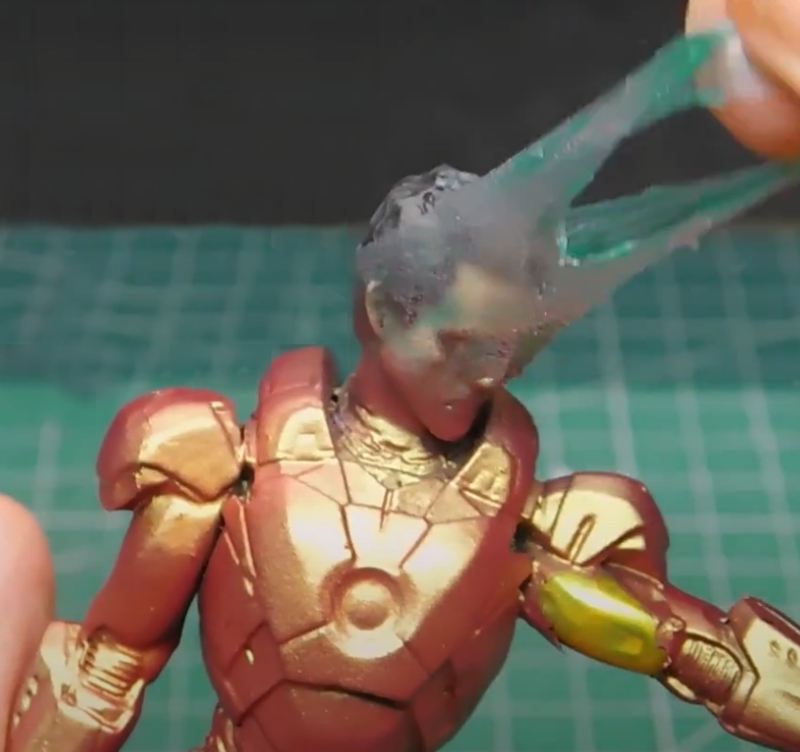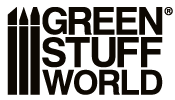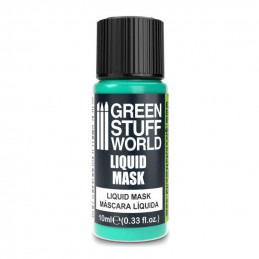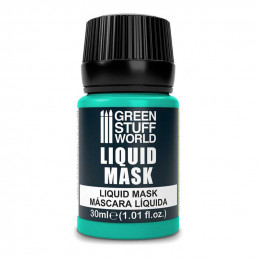- There are no more items in your cart
- Shipping
- Total €0.00
- Paint
- Model Paints
- Flexible Paints
- Auxiliary Paints
- Weathering and Pigments
- Water effects
- Miniature Paint Brushes
- Paint Accesories
- Texture paint
- Refillable paint pen
- Airbrushing
- Paint Rack
- Paint Spray
- Hobby Tools
- Hobby Tool Kit
- Modeling Tools
- Engraving tools
- Cutting Tools
- Texturing Tools
- Rolling Pins
- Static Grass Applicator
- Leaf Punches
- Photo Etched Tools
- Abrasive Products
- Thermoforming Machines
- Hobby Drill
- Modeling tweezers
- Clamps and Miniature Holders
- Putties and Materials
- Scenery and Resin
- Resin items
- Resin Busts and Figures
- Static Grass
- Grass Tufts
- Basing Sets
- Miniature Basing Materials
- Snow Modeling
- Hobby Sand
- Wargaming mats
- Wargaming Terrain
- Other Scenery
- Letters and Numbers for Modelling
- Photo Etched Model Parts
- Hobby Accessories
- Miniature bases
- Movement Trays
- Neodymium magnets
- Magnetic Sheet
- Modeling glue
- Wood bases
- Acrylic Display Blocks
- Lighting and electronics
- Miniature Carry Case
- Hobby Lamps
- Photography
- Board games
- Waterslide Decals
- Miniature Display Cases
- SteamPunk and Beads
- Cosplay shop
- Wholesaler
- 3D printers
- OUTLET Offers
- Merchandising
- New Products
Liquid Masking Tape
What is a liquid masking tape, and how does it work?
A liquid masking tape is a protective covering used in airbrushing to shield specific areas from paint overspray. It allows for precise and controlled application of paint on a surface while preventing color from reaching masked areas. They come in various forms, including tape rolls, liquid masks, and custom-made stencils. The key to their effectiveness lies in their ability to adhere to the surface temporarily, creating a barrier that ensures clean and defined edges in your airbrushing work.
Green Stuff World liquid mask is a turquoise liquid solution that is applied to a surface using a brush or other applicator. It dries quickly to form a thin, flexible, and water-resistant film that can be easily peeled off or removed with a solvent after the painting or drawing is complete.
Its main advantage is that it can be applied to any surface, including curves and uneven surfaces, unlike all adhesive bands. It also allows for more precision and control, as it can be applied in thin layers to create fine lines and details that may be difficult to achieve with adhesive bands.
What is the best airbrush liquid mask for different applications?
The choice of the best liquid mask tape depends on the specific application and your preferences as an artist or modeler. Here are some popular options:
- Tape-Based: It is a versatile choice suitable for basic needs. It is easy to apply and remove, making it ideal for simple designs and projects with straight edges.
- Liquid: Often referred to as masking fluid, is a liquid latex-based solution. It can be applied with a brush or airbrush and is excellent for complex curves and irregular shapes. They are preferred for intricate detailing and precise work.
- Custom-Made Stencils: Artists often create custom stencils using materials like vinyl, airbrush stencils or Mylar. These stencils can be designed with intricate patterns or shapes, allowing for precise and repeatable masking in airbrushing.
- Pre-Made: Many manufacturers offer pre-made airbrush masks designed for specific airbrushing projects, such as model kits, RC vehicles, or scale models. They save time and ensure a perfect fit for your project.
How to choose the right masking liquid for airbrushing miniatures?
When airbrushing miniatures or scale models, precision is crucial. To choose the right masking liquid for such detailed work, you must consider some factors.
To select the right tool for such meticulous work, take into account the intricacies of the design. A liquid mask tape or a custom-made stencil are the go-to choices for intricate designs, as they conform to irregular surfaces and deliver precise masking, which is indispensable for small-scale models.
Consider the size of your miniature when making a choice. For larger models, masking tape might prove effective, but for those minute details, the Green Stuff World liquid mask should be your preference.
For those who plan on reusing tools across multiple miniatures, investing in durable materials like vinyl stencils is advisable. These materials can be cleaned and used again, ensuring longevity and cost-effectiveness.
Adhesion strength is a critical factor to consider. Ensure that the chosen tool adheres firmly to the surface without leaving residue or causing damage to the underlying paint upon removal.
When dealing with models with delicate parts, give priority to materials that can be easily removed without causing damage, such as the Green Stuff World liquid mask. Opt for products that you are most familiar with and if possible have easy removal to safeguard the integrity of your models or parts.
What are the key features to look for in a liquid masking tape for painting miniatures?
When selecting the best liquid mask tape, consider the following key features to achieve the best results:
- Precision: Ithould allow for precise control over the areas to be painted, ensuring clean and sharp edges.
- Adhesion: It should adhere well to the surface without lifting during the airbrushing process.
- Flexibility: It should conform to the contours of the object, whether it's flat or curved, ensuring that paint doesn't bleed underneath.
- Reusability: Choose one that can be easily cleaned and reused if you plan to work on multiple projects.
- Compatibility: Ensure that the material is compatible with the type of paint you intend to use.
- Ease of Removal: It should be removed without leaving residue or damaging the painted surface.
- Durability: Consider durability, especially for projects that require multiple layers of painting or handling.

How can I create precise masks for airbrushing on scale models?
Creating precise masks for airbrushing scale models requires attention to detail and the right tools. Here's a step-by-step guide:
- Prepare Your Design: Plan your work and design carefully, considering the areas you want to paint and those you want to protect.
- Choose the proper material for your project: Depending on your design, choose the appropriate masking material. For intricate designs, consider liquid masking tapes or custom-made stencils. For broader areas, masking tape or pre-made masks may suffice.
- Prepare the Surface: Ensure that the model's surface is clean and free of dust and oils, as these can affect adhesion.
- Apply it: Carefully apply the masking material to cover the areas you want to protect. Ensure that it adheres firmly and that there are no gaps where paint could seep through.
- Trim and Adjust: Use a hobby knife or fine scissors to trim the mask precisely along the edges of the design. Make any necessary adjustments to ensure a perfect fit.
- Painting: Proceed with airbrushing, being mindful of the masked areas. Apply paint in light, even coats to avoid seepage under the mask.
- Remove it: Once the paint is dry, gently remove it, taking care not to damage the painted surface. If you use the liquid mask, you can often rub it off with your finger or a soft eraser.
- Touch-Up: Inspect the painted area for any imperfections and make any necessary touch-ups with a fine brush.
By following these steps, you can create precise masks for airbrushing scale models and achieve professional-level results.
What materials are commonly used for creating masks in airbrushing?
The creation of masks involves the utilization of diverse materials, each possessing distinct advantages suited for various applications. Among these materials is masking tape, a widely employed choice known for its versatility in different projects. With varying widths and adhesion strengths, this tape is easy to cut, apply, and remove.
- A liquid masking tape normally crafted from latex, stands out for its proficiency in concealing irregular shapes and delicate details. Whether brushed or airbrushed onto surfaces, removal is achieved through rubbing or peeling.
- Vinyl sheets or rolls offer a durable and reusable option, allowing customization by cutting them into specific shapes. Embraced by modelers, vinyl masks ensure precise results in airbrushing endeavors.
- Transparent stencil films, exemplified by Mylar or Frisket film, facilitate meticulous design cutting. These films prove to be an excellent choice for crafting intricate stencils in the realm of airbrushing.
- Masking Putty, represented by the Green Stuff World product available on our official site, is a malleable substance that conforms to specific areas. Its strong adhesion and residue-free removal enhance its appeal. It is a reusable material.
- For those seeking convenience, manufacturers provide pre-made masks tailored for specific projects, such as model kits or RC vehicles. They have been meticulously designed for a perfect fit, streamline the process, and save time.
- Low-tack adhesive sheets, a preference of some artists and modelers, offer ease of cutting and application. Known for their gentle treatment of surfaces and minimal residue, these sheets enable the creation of custom pieces.
Ultimately, the selection of masking material is contingent on factors such as project complexity, desired precision, and personal preference.
Can I reuse airbrush masks, and how do I clean them?
Airbrushing masks can be crafted from a variety of materials where the vast majority are single-use products, each possessing distinct advantages tailored to diverse applications.
There are only 3 products that can be really reusable since most of them will have problems sticking again to the surface once used, or simply because they have absorbed paint which has damaged their consistency or resistance making their successive uses unfeasible, and these will be as follows:
- Stencil Films, such as Mylar or Frisket film, offer transparency, facilitating meticulous design cutting. Ideal for crafting intricate stencils tailored for airbrushing. These materials are paint and water-resistant plastics that can be reused. They are usually non-adhesive and have a more rigid consistency.
- Masking Putty, manufactured by Green Stuff World, it is a moldable putty that conforms to specific areas. Its reliable adherence and residue-free removal make it a convenient choice. 100% reusable.
- Pre-made masks, crafted by manufacturers for specific projects like model kits or RC vehicles, ensure a perfect fit and save time during application. It is the same case as the first point with Stencil Films and Mylar-type materials.
Ultimately, the selection of a masking material hinges on factors such as project complexity, desired precision, and personal preference.
Are there any tips for achieving clean and sharp edges when masking with an airbrush?
It is essential to prioritize a few key considerations for a polished and professional finish. Begin by meticulously preparing the surface, ensuring it is devoid of any dust, oils, or imperfections that could compromise the adhesion of the product and the quality of the edges.
Selecting the right material is paramount. Depending on the complexity of the shapes involved, options such as masking tape liquid, custom stencils, and vinyl masks can be excellent choices to achieve precision and sharp edges.
Securely affix the edges of the mask to the surface, using a burnishing tool or the back of your fingernail to press down firmly and prevent any unwanted paint bleed. When airbrushing, apply paint in light and even coats, maintaining a distance to avoid forcing paint underneath the masked edges.
When it comes time to remove the liquid mask, exercise care and consistency. Avoid abrupt or jerky movements that could lead to tearing, leaving behind uneven and ragged edges. If necessary, employ a fine brush to touch up any imperfections along the masked edges with matching paint colors.
Remember that achieving mastery in clean edges through airbrushing demands practice. Exercise patience, allowing yourself to learn and refine your technique with each project. With consistent practice and attention to detail, you can reliably produce clean and sharp edges, elevating the overall quality of your airbrushing work.
 Cookie preferences
Cookie preferences







